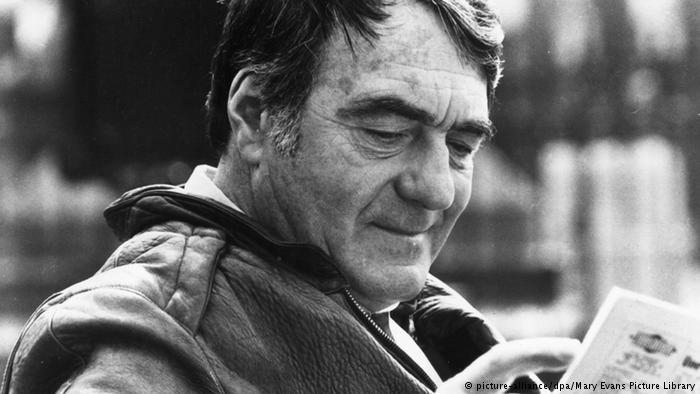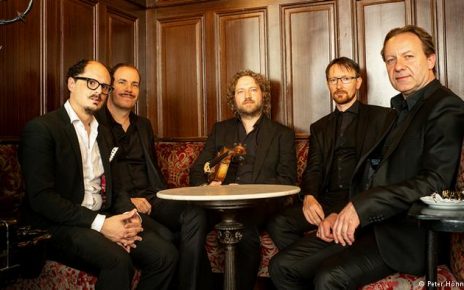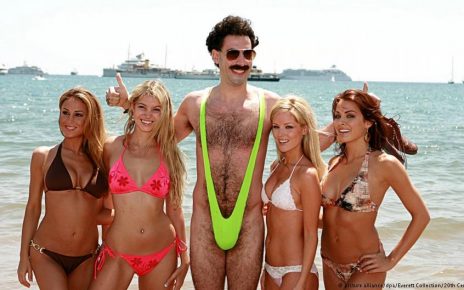French filmmaker and journalist Claude Lanzmann died on Thursday in Paris at the age of 92. He had been weak for several days, his publisher Gallimard told press agency AFP.
Joined French Resistance as a teen
Born to Jewish parents in Paris in 1925, Claude Lanzmann was a fighter from the start. He experienced pre-war anti-Semitism first hand in high school.
Later, the young Lanzmann and his siblings joined the French Resistance and learned the most important rules for partisan warfare against Nazi German occupiers from their father.A healthy dose of distrust and “active pessimism” were the most central lessons, Lanzmann would later write in his memoirs.
His father’s efforts paid off: when he was just 18, he organized part of the French Resistance in Clermont-Ferrand, went on to fight as a partisan in the Auvergne region, where he and his comrades disrupted German deployment of troops to Normandy.
Read more: ‘Who Was Hitler’: New documentary lets people who knew him speak
At 23, a lecturer in Berlin
Following World War II, Lanzmann studied philosophy at the Sorbonne in Paris, before heading to Tübingen for a year in 1947 with his friend Michel Tournier.
He said later in an interview with a German newspaper: “I was able to be among the Germans because I hadn’t fled them, I had fought against them. I wanted to go to Germany because it’s the mother country of philosophy.”
But it was first and foremost Lanzmann’s curiosity about the former occupiers of his country that took him to Germany, as he began to focus mainly on analyzing the Holocaust.
During the winter semester of 1948/49, Lanzmann was a guest lecturer at the newly established Free University of Berlin at just 23 years of age. Responding to requests by students, he gave lectures on anti-Semitism, using Jean-Paul Sartre’s essay Anti-Semite and Jew as a base for his work.
Reverence for Sartre, love for de Beauvoir
Back in Paris, Lanzmann worked as a journalist, where he grabbed the attention of his idol Jean-Paul Sartre with a series of articles entitled “Germany behind the Iron Curtain,” published in the French daily Le Monde. Sartre asked Lanzmann to work for his magazine, Les Temps Modernes, and Lanzmann remained editor of the journal throughout his life.
In 1952, he began an affair with the philosopher and writer Simone de Beauvoir. It ended in 1959, but he continued to be close to her until her death in 1986.
It wasn’t until he was in his mid-40s that Lanzmann began working with film — resulting in Israel, Why, released in 1973. Twenty-five years after its founding, the film examined the state of Israel, to which he felt connected his entire life.
Read more:75 years on: the Warsaw Ghetto Uprising in film
Twelve years of research for Shoah
Shortly thereafter, Lanzmann began traveling through Poland, doing research for his masterpiece, Shoah.
Over a period of 12 years, the filmmaker searched for Holocaust survivors in the country, interviewing both victims and perpetrators.
Lanzmann asked German public television WDR for financial support for the project. “We were familiar with Lanzmann’s first film and agreed right away,” said Wilfried Reichart, at that time director of WDR’s film department. “We gave him absolutely free rein because it was quite clear to us that this was a huge topic and Lanzmann was the right person to cover it.”
Shoah is a nine-hour epic in two parts, which is unlike any other film about the Holocaust.
Lanzmann did not include any archive material, but showed victims, perpetrators and the places of destruction and annihilation as they are now.
There had never been anything like it before. “Shoah is a ‘contra’ film — an antidote or counter-agent to museums and monuments which, according to Lanzmann, are stewards of memory,” said Reichart. It challenged the idea of making atrocities comprehensible.
Nearly therapeutic relationship to protagonists
In Shoah, Lanzmann aimed to bring the history into the present, making it distinct from melodramatic American productions such as Marvin Chomsky’s Holocaust or Steven Spielberg’s Schindler’s List.
While Spielberg’s movie dealt with Holocaust survivors, Lanzmann looked at those who died.
“With Lanzmann, there’s no tear-filled denouement,” noted Gertrud Koch, a film studies professor at the Free University of Berlin. “Instead, he evokes the structure of the trauma — making his film much more radical, and his aesthetics more fitting to the subject matter.”
Lanzmann let the survivors bear witness, even when it was nearly too much for them. He brought his protagonists back to these places of horror, let them go through the motions they went through as they relay their experiences. He turned them into actors of their own story, similar to establishing a psychological framework. It was a long-term, nearly therapy-like relationship that connected the director and the protagonists.
“Lanzmann made such an unparalleled work because he managed to stage things so that we — as viewers — do not perceive what we are seeing as role-playing. That’s how he brought what transpired so close to us,” said Koch.
Read more: How art has imprinted Auschwitz on our memory
Famous around the globe
Shoah premiered at the Berlinale in 1986 and won three important critics’ awards. Many awards and much acclaim would follow, catapulting Claude Lanzmann to international fame.
From the over 350 hours of material filmed for Shoah, Lanzmann would go on to make other movies, including A Visitor from the Living (1997), Sobibor, Oct. 14, 4 p.m. (2001) and The Karski Report (2010).









